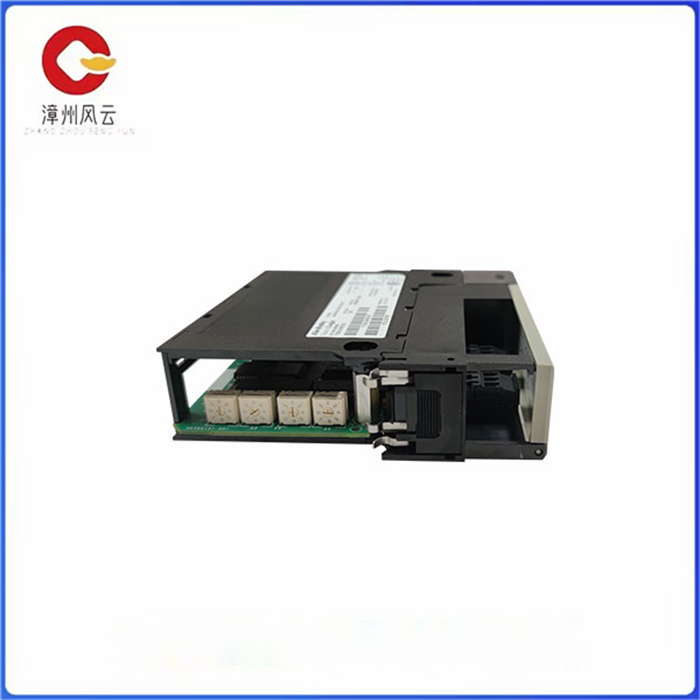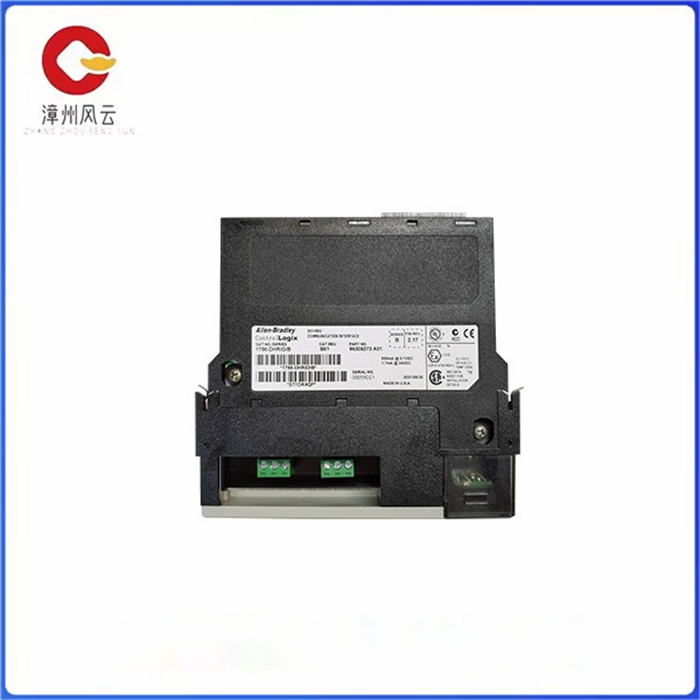 手机:17359299796
手机:17359299796— 产品中心 —
 全国免费客服电话 17359299796
全国免费客服电话 17359299796 邮箱:A3669372910@163.com
手机:17359299796
电话:17359299796
地址:福建省漳州市龙文区朝阳北路1号办公楼205室
1756-DHRIO一款通信模块用于通道A和B的端口系列ControlLogix模块类型数据高速/远程I-O通信模块位置1756ControlLogix机箱通信
产品详情
| 系列 | ControlLogix |
| 模块类型 | 数据高速/远程I-O通信模块 |
| 位置 | 1756 ControlLogix 机箱 |
| 通信速度 | 57.6 Kbaud、115.2 Kbaud、230.4 Kbaud |
| 电缆长度 | 3048米(10000英尺),1524米(5000英尺),762米(2500英尺) |
| 推荐电缆 | Belden 89463 双轴, 0.52 mm² (20 AWG),额定温度为 200 °C (392 °F) |
| 背板电流 (5V) | 1.7毫安 |
Allen-Bradley 1756-DHRIO 是一款 ControlLogix Data Highway Plus/远程 I/O 通信接口模块。该模块有两 (2) 个通道,支持每秒 57.6 KB、每秒 115.2 KB 和每秒 230.4 KB 的通信速率,具体取决于电缆长度。它最多可以通过三个机箱和四个通信网络传输消息。通过该模块,即使在不同的网络上,PLC、SLC 和 ControlLogix 控制器等设备之间也可以进行信息交换。
它支持以下类型的通信:设备之间的远程 I/O、控制和信息协议 (CIP) 消息传递以及 Data Highway Plus (DH+) 消息传递。它最多可以有 32 个 Logix 连接,远程 I/O 链路可以连接到远程 I/O 设备以及其他智能设备。当连接到远程 I/O 网络时,它可以充当适配器或扫描仪,即使在没有消息指令的情况下也能传输模拟、数字、块和特殊数据。在安装 1756-DHRIO 模块之前,您需要对每个通道的网络类型交换机进行编程,并安装和连接 ControlLogix 电源和机箱。您可以在同一机箱中安装尽可能多的模块,但这取决于您的可用电源。请注意,即使在施加机箱电源时,也可以安装或拆卸模块,但您需要遵守安全预防措施,特别是该区域是无害的,并且电源已断开,以防止电弧可能导致模块和连接器的触点过度磨损。确保释放电位静电,因为模块对静电放电很敏感。
RIO 和 DH+ 协议使用相同的电缆类型。推荐的电缆是 Belden 89463 双轴 0.52 mm² (20 AWG),额定温度为 200 °C (392 °F)。适用的备用连接器是部件号为 MVSTBR2.5/3-ST BK AU 的 Phoenix 端子。
DH+ 和远程 I/O 网络需要使用终端电阻器,因为它遵循菊花链拓扑结构。该电阻器安装在网络的第一个和最后一个节点。电阻值取决于网络速度。82欧姆用于230.4Kbps的网络速度。150 欧姆用于 57.6 Kbps 或 115.2 Kbps 的网络速度。还考虑了其他注意事项,包括连接到网络的设备类型。终端电阻器安装在电缆的 1 线和 2 线之间。第三根电缆是屏蔽电缆。
要按照 RIO 协议端接电缆,将线路 3 连接到底部引脚或端子 1,屏蔽电缆端接到中间引脚,线路 1 端接到最后一个引脚。要将电缆适当地连接为 DH+ 协议,只需将 2 号线和 1 号线的连接反转即可。
该模块还支持与 Flex IO、点 IO 系统以及 PLC 2、SLC、CompactLogix 和 ControlLogix 控制器的消息传递功能进行通信。

The Allen-Bradley 1756-DHRIO is a ControlLogix Data Highway Plus/ Remote I/O communication interface module. The module has two (2) channels and supports communication rates of 57.6 kilobits per second, 115.2 kilobits per second and 230.4 kilobits per second, depending on cable length. It can transmit messages through up to three chassis and four communication networks. With this module, information can be exchanged between devices such as PLCS, SLCS and ControlLogix controllers, even on different networks.
It supports the following types of communication: remote I/O, Control and Information Protocol (CIP) messaging between devices, and Data Highway Plus (DH+) messaging. It can have up to 32 Logix connections, and remote I/O links can connect to remote I/O devices as well as other smart devices. When connected to a remote I/O network, it can act as an adapter or scanner, transmitting analog, digital, block, and special data even in the absence of message instructions. Before installing the 1756-DHRIO module, you will need to program the network type switches for each channel and install and connect the ControlLogix power supply and chassis. You can install as many modules as you want in the same chassis, but it depends on your available power supply. Note that a module can be installed or removed even when a case power supply is applied, but you need to follow safety precautions, especially if the area is harmless and the power supply is disconnected to prevent arcing that may cause excessive wear on the contacts of the module and connector. Make sure to release the potential static electricity, as the module is sensitive to electrostatic discharge.
The RIO and DH+ protocols use the same cable type. The recommended cable is the Belden 89463 two-axis 0.52 mm² (20 AWG), rated at 200 °C (392 °F). The suitable alternate connector is the Phoenix terminal with part number MVSTBR2.5/3-ST BK AU.
DH+ and remote I/O networks require the use of terminal resistors because it follows the Daisy chain topology. The resistor is installed at the first and last node of the network. The resistance value depends on the network speed. 82 ohms are used for a network speed of 230.4Kbps. 150 ohms are used for network speeds of 57.6Kbps or 115.2Kbps. Other considerations are also taken into account, including the type of device connected to the network. The terminal resistor is installed between wires 1 and 2 of the cable. The third cable is a shielded cable.
To end the cable according to the RIO protocol, connect line 3 to the bottom pin or terminal 1, the shielded cable end to the middle pin, and line 1 end to the last pin. To properly connect the cable to the DH+ protocol, simply reverse the connection of line 2 and line 1.
The module also supports communication with Flex IO, point IO systems, and the messaging capabilities of the PLC 2, SLC, CompactLogix, and ControlLogix controllers.

相关推荐